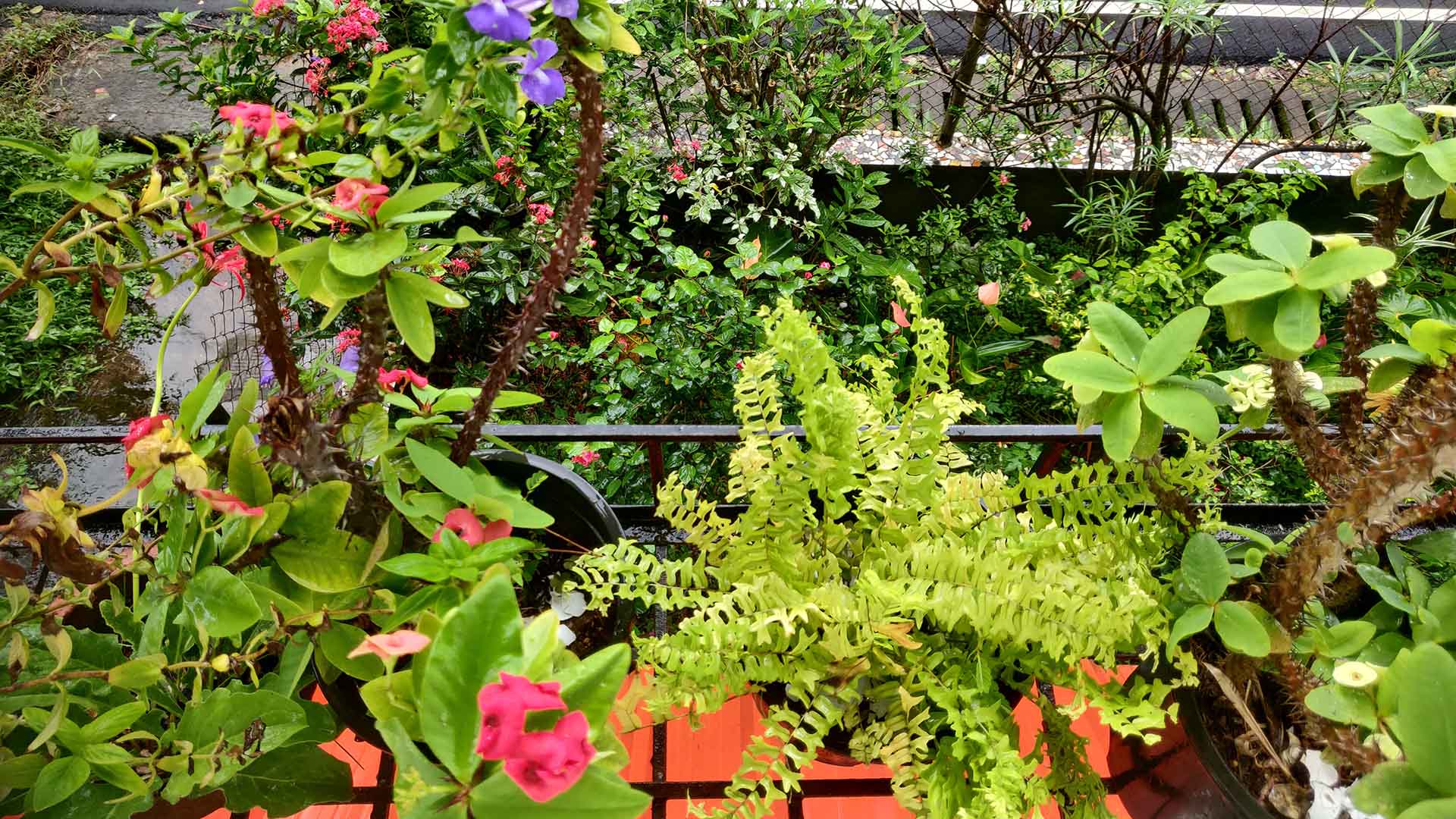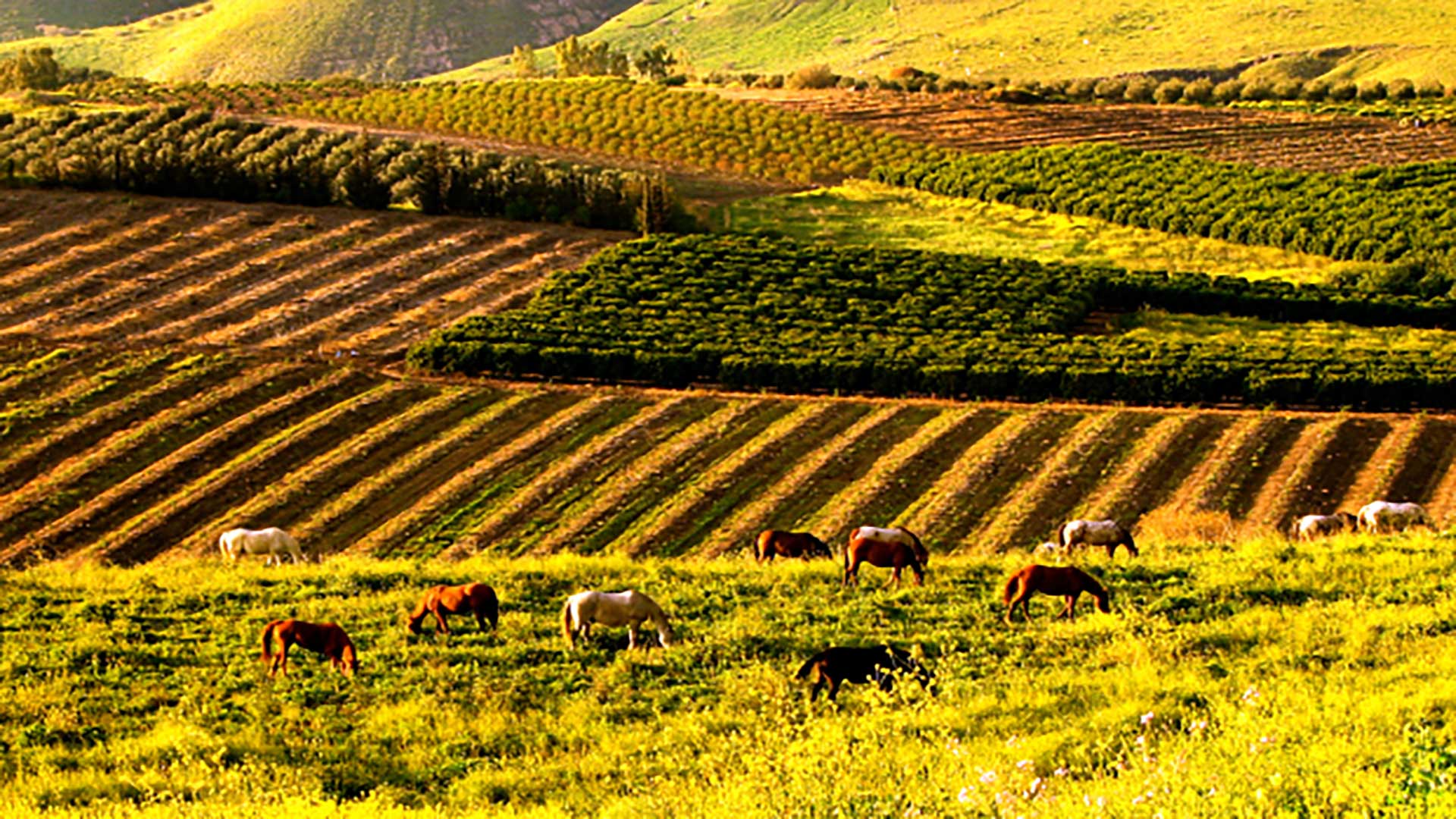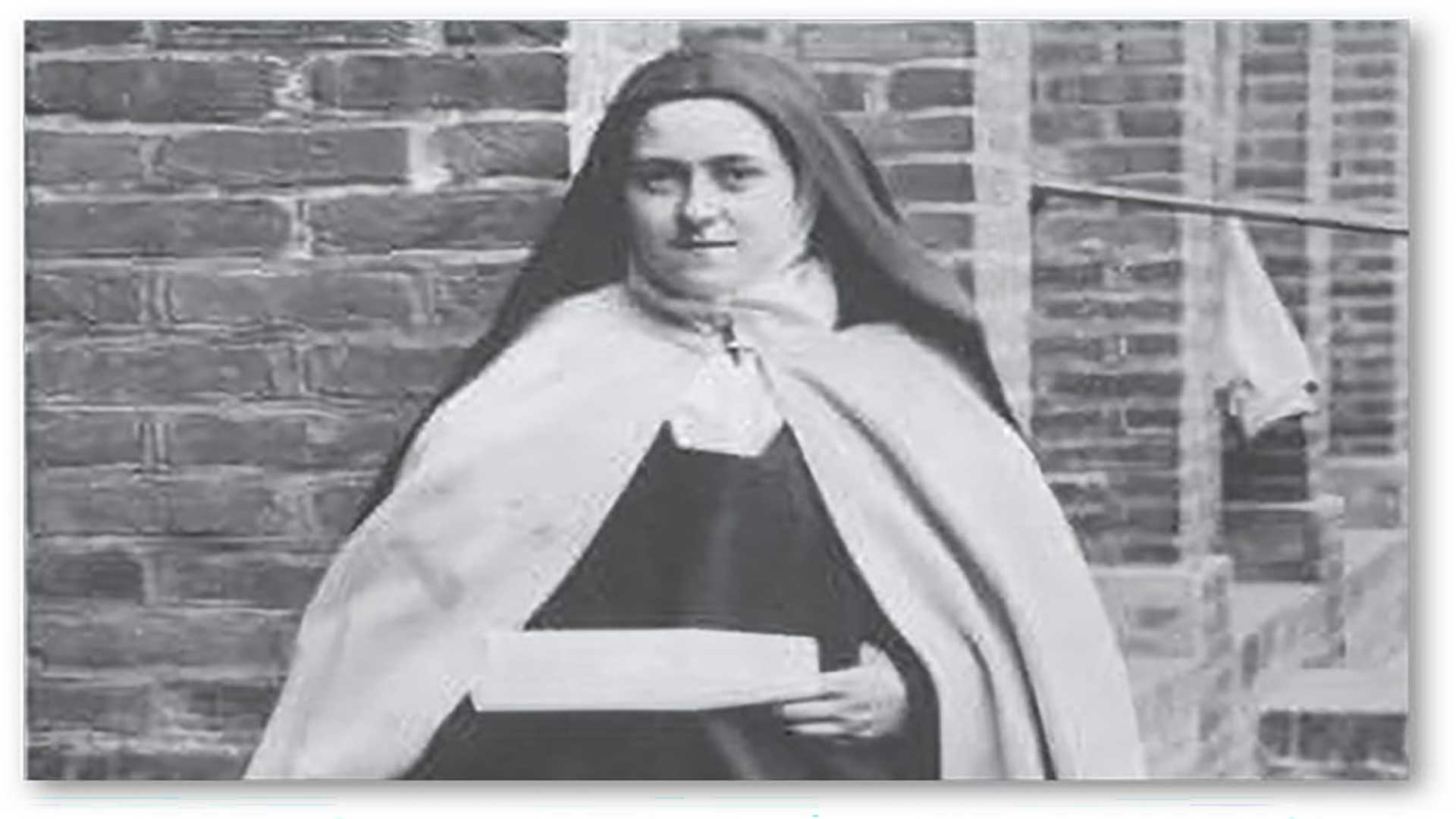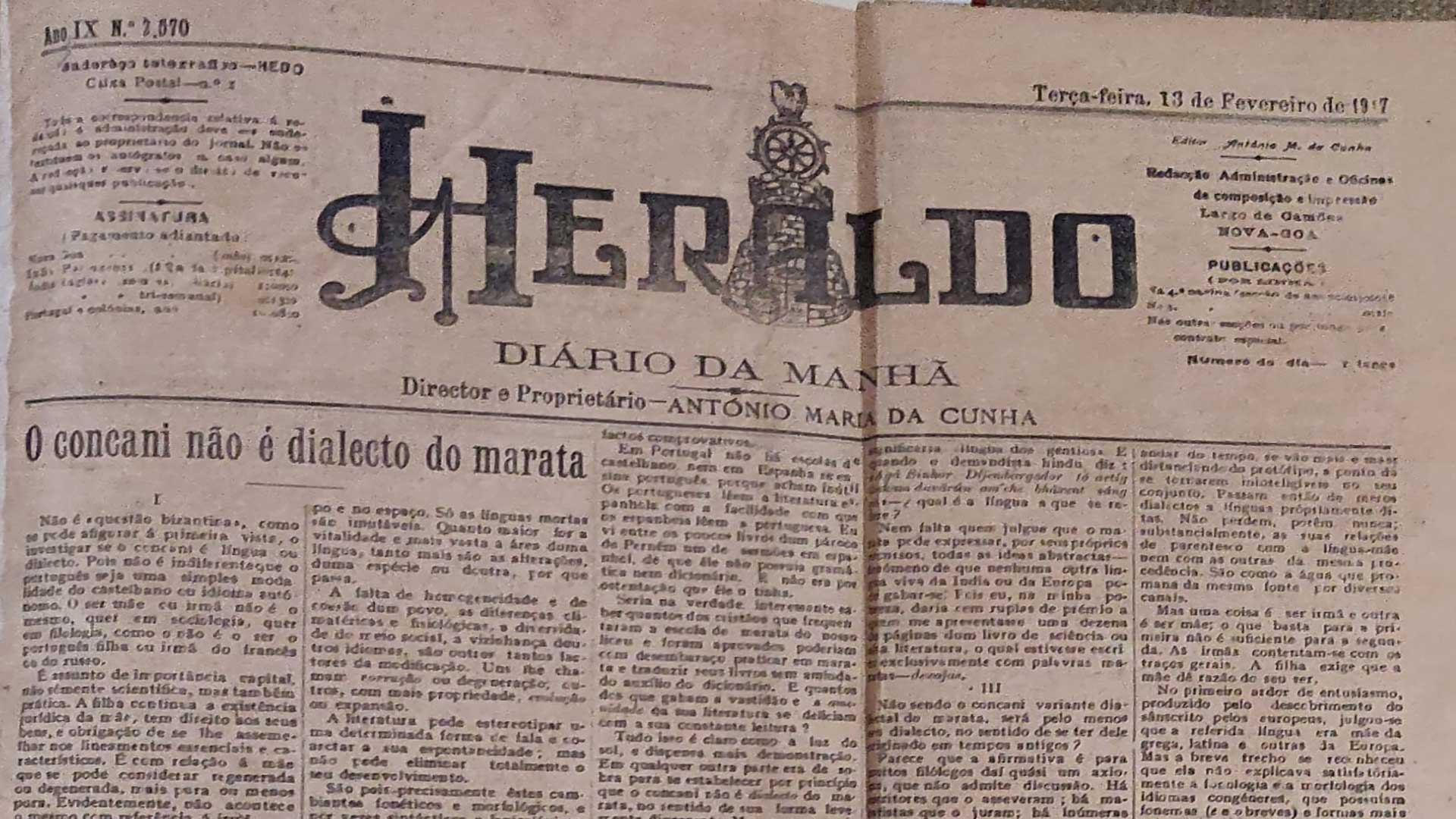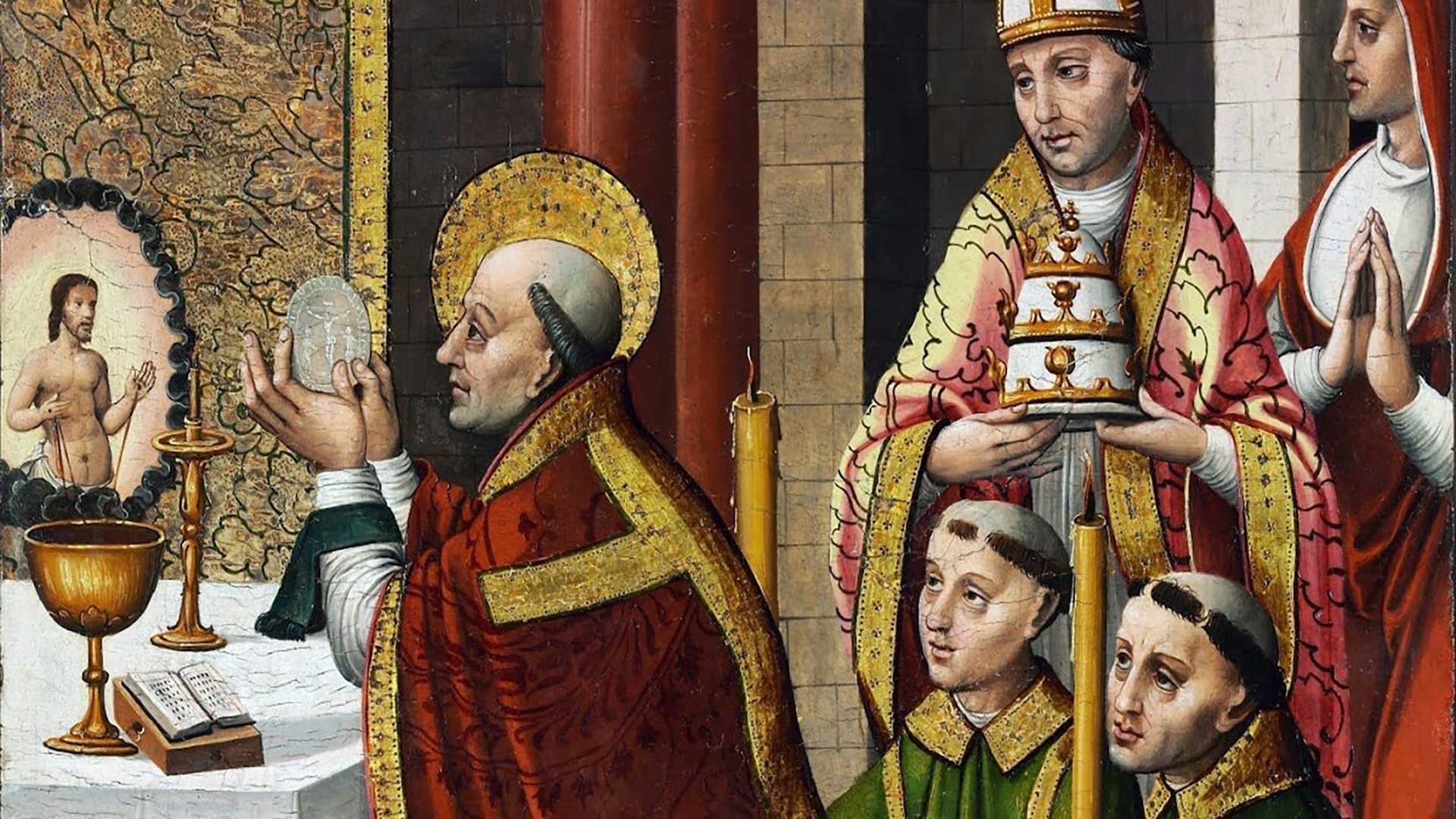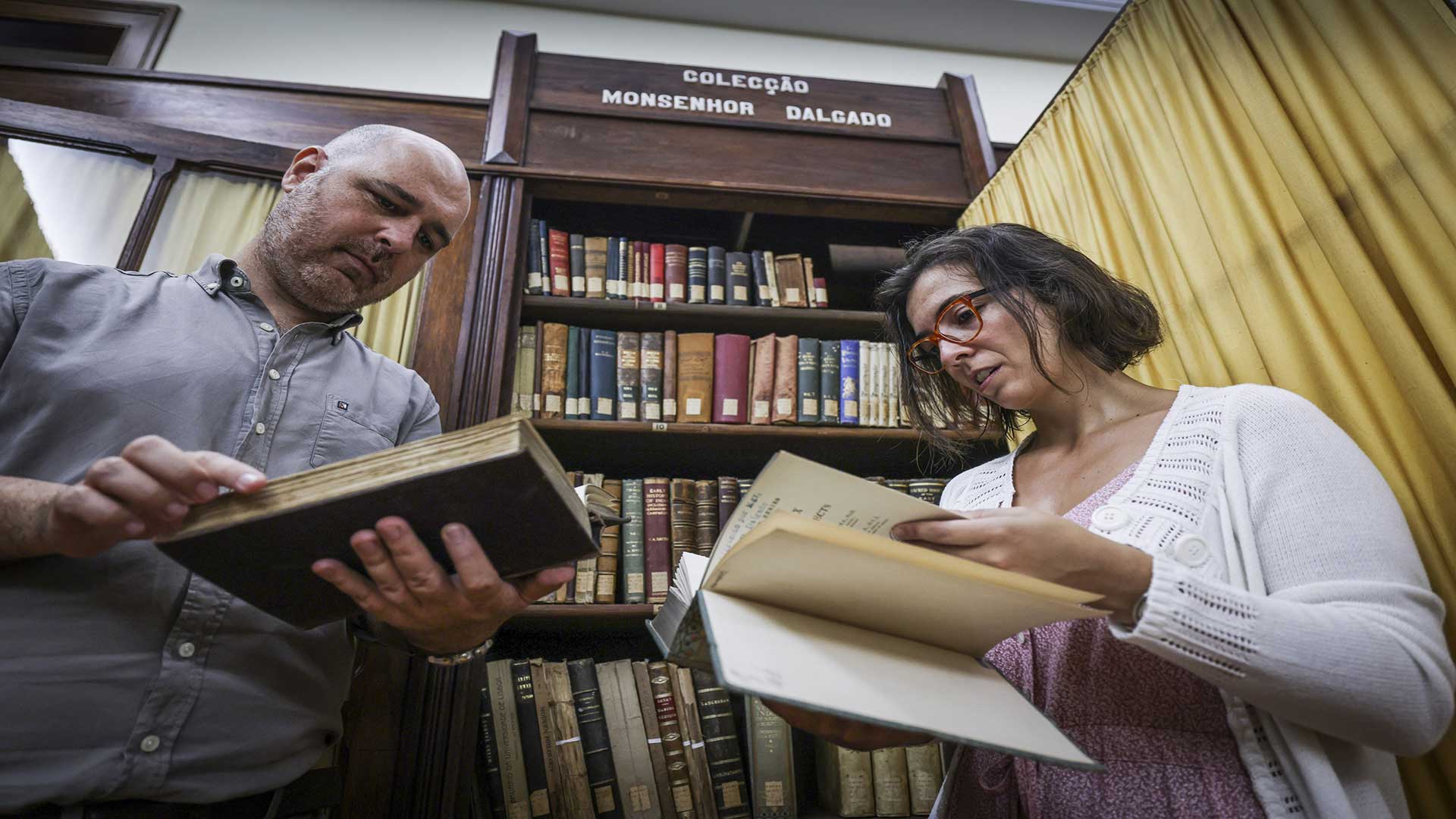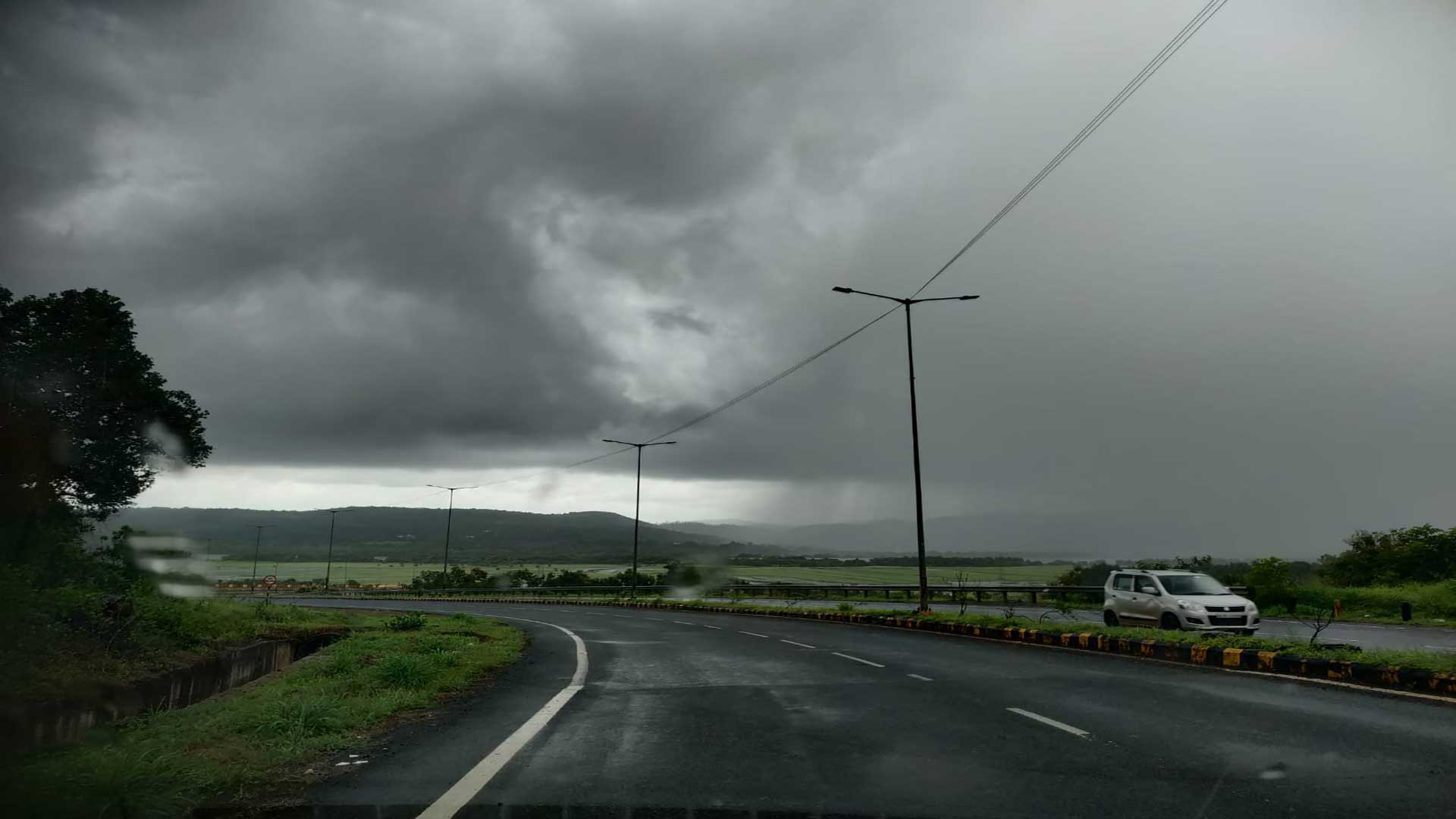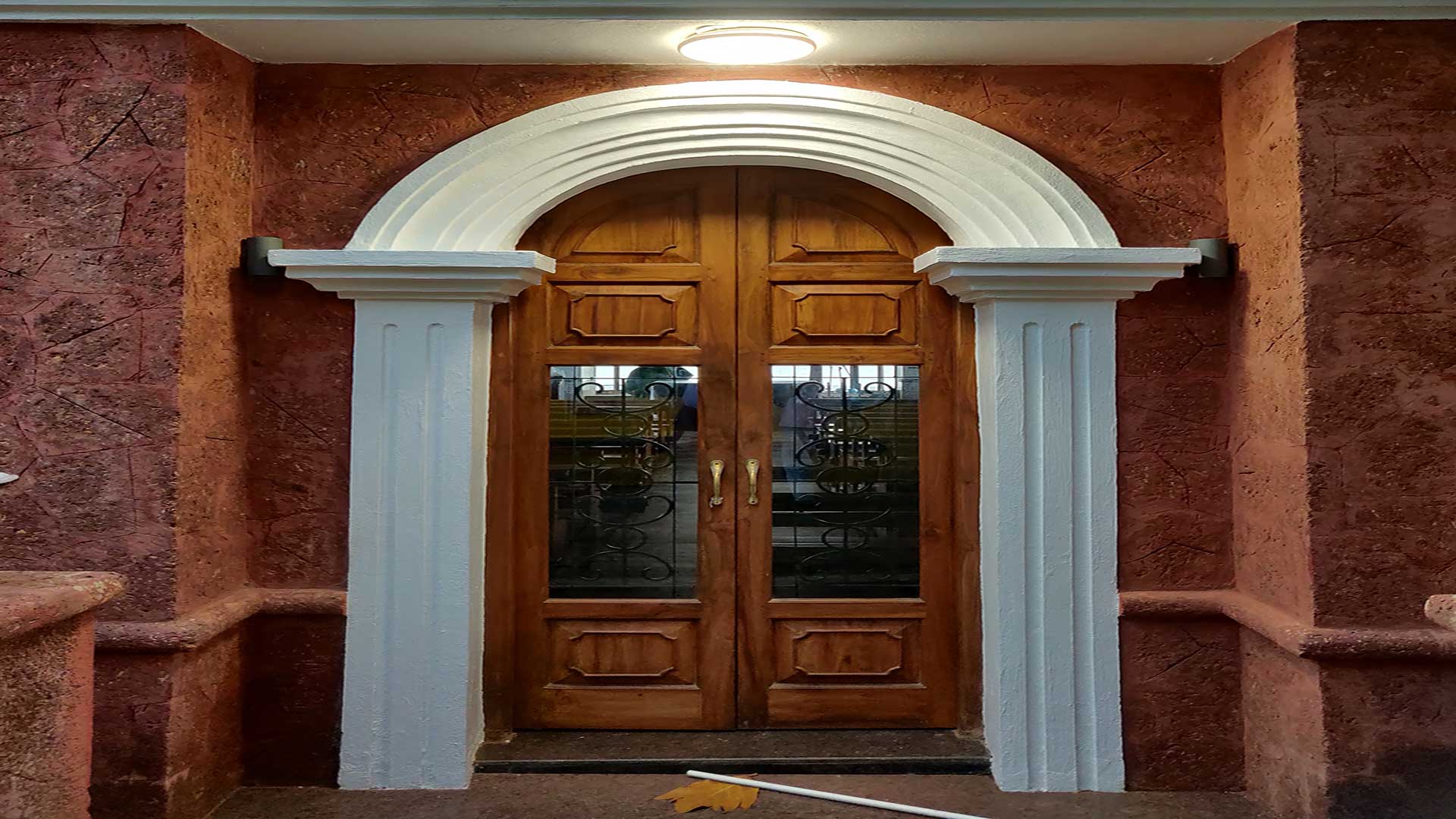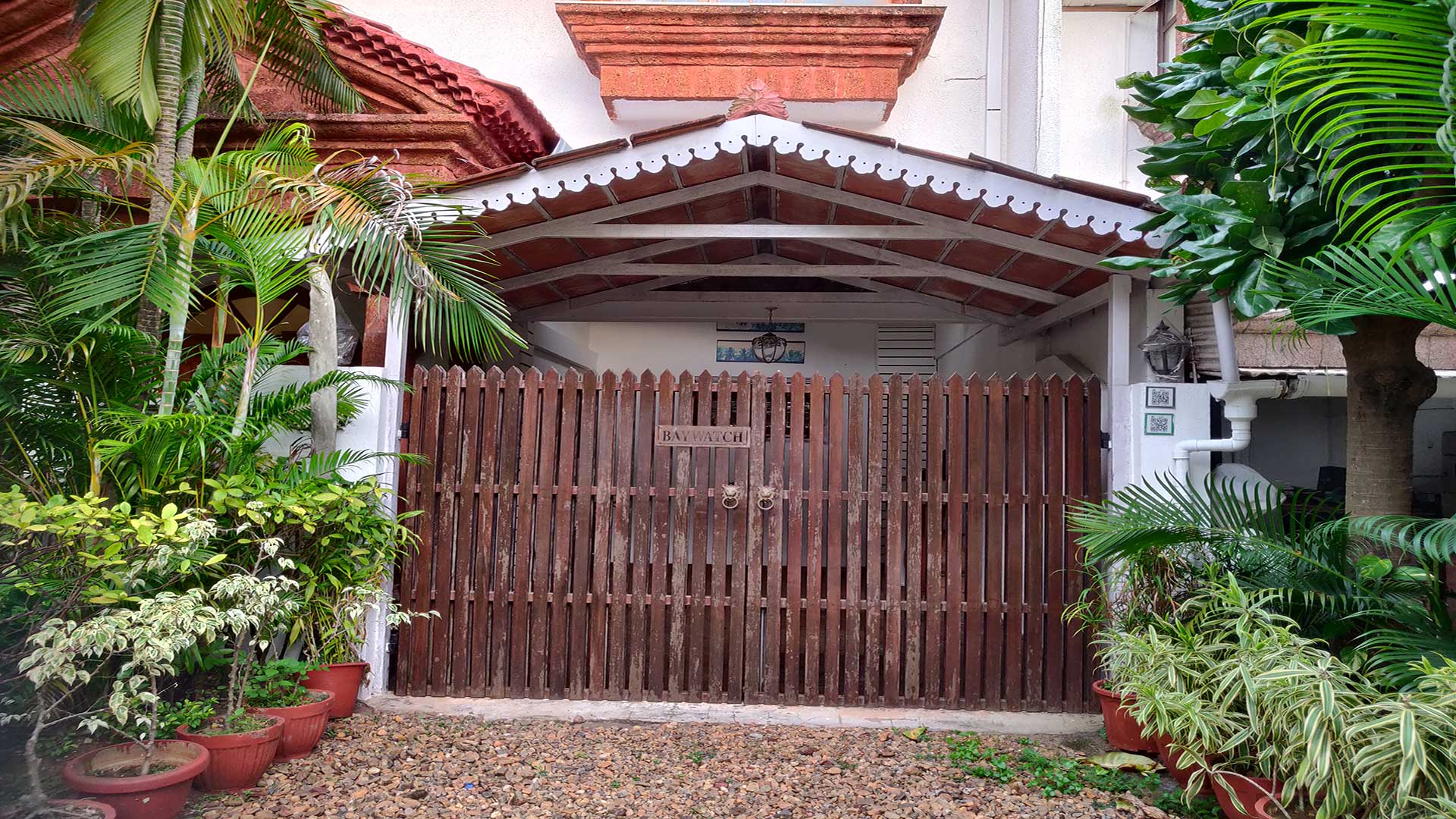The Elect to Eternal Life
The Readings of today provide at least a faint background to the goings-on in West Asia, a region long steeped in violence and terrorism. While the Jews claim that the recent attack on Israel has been the deadliest for them since the German Holocaust, one can’t help but think of the Prince of Peace who once walked that way with a promise of great hope for the human race!
God made many several covenants with the people of Israel. In the First Reading (Is 25: 6-10) we note His promises of freedom and celebration on Zion, the mount on which the city of David was built. In its Temple God has promised to unite the peoples of the world. There they will live in harmony, putting behind them pride, hatred, injustice and war. With joy and life replacing mourning and death, the people will sing, “This is the Lord; we have waited for Him; let us be glad and rejoice in His salvation.”
The Lord is none other than Christ our Saviour. David’s Psalm 23, too, famously reminds us that in good times and in bad, in sickness and in health, the Lord is our Good Shepherd. Those who trust in Him shall not want but enjoy green pastures, restful waters, sufficient repose and a joyful spirit. For He is the God of wisdom, strength and kindness; who guides us, walks by our side, comforts, feeds and anoints us. The Psalm spoke warmly to the heart of pastoral Israel.
Jesus’ parable in today’s Gospel text (Mt 22: 1-14) brings the images of the Old Testament closer to us by comparing the Kingdom of Heaven to a sumptuous wedding banquet. The first invitees (representing the Jews, who were the first to hear God’s Word) failed to honour the king’s (God’s) invitation: they not only went about their own petty tasks, but even killed the king’s messengers! Much like the owner of the vineyard, in last Sunday’s parable, the king sent his troops to destroy the murderers and burn their city. Finally, he extended his invitation to the rest of the world (thus announcing the universality of the Kingdom of God), and the wedding hall (His Church) was full.
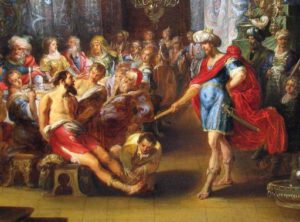
But then again, who is the “man who had no wedding garment”? In those days, all guests were supplied with a robe to wear at the banquet; but here was a stranger, probably a crasher, who either had no robe or had failed to wear one. Not to be taken for a poor man but a guest flouting the norms, he is, quite expectedly, shown the door. In like manner, why won’t those who disregard the Commandments be bound hand and foot and cast into the “outer darkness” (hell), where men “weep and gnash their teeth”?
Jesus makes it clear that the divine invitation is gratis but also exacting. It is the wearing of the garment of Christ in a worthy manner that will entitle us to the heavenly banquet. Even though He has invited all into His tent, only those who have fulfilled the stipulated conditions will be chosen to dine with Him.[1] It is ironical that even at the Last Supper this truth had not dawned on the Apostles!
For that matter, did the Jews remember the parable when Jerusalem and the temple were reduced to rubble in 70 A.D.? And will they now turn a new leaf? God, who is slow to anger and abounding in love, is never discouraged. He continues to make overtures of friendship. Hence, quite significantly, the Jews, themselves a persecuted and dispersed lot, are gathering back in their land after two millennia in exile. This is not to absolve their governments from their continued violence, which is the handiwork of evil men in the Holy Land. Be that as it may, will the Jews finally seize the day and turn to the True God?
Only a profound change of heart can bring about a transformation in the world at large. St Paul refers to the necessary dispositions, in the Second Reading (Phil 4: 12-14, 19-20). He who had received substantial material help from the Philippians was not overly concerned about how he should be living. The message he wishes to highlight is that God is the great Provider of our every need, according to His riches, in marvellous ways, in His Son Jesus. So, when we are with the Good Shepherd, we have nothing to fear; when the Good Lord is with us, none can be against us.
Let us therefore never decline a good invitation; and if it be a divine call, let us accept it wholeheartedly and be steadfast, so as to be counted among the elect to eternal life.
------
[1] This parable has a parallel only in Luke 14: 16-24.
Goencheo Mhonn'neo - IV | Adágios Goeses - IV
Segue uma quarta lista de adágios,[1] extraídos do livro Enfiada de Anexins Goeses, obra bilíngue (concani-português), de Roque Bernardo Barreto Miranda (1872-1935)[2].
Tradução literal | Tradução livre
Fôttquiryachém nãy sot, ani pav’sachém nãy vot. | Fottkireachem nhoi sot, ani pavsachem nhoi vot.
Não se deve fiar num homem mentiroso, como na luz do sol, no tempo invernoso.
Donn hoddyen’ar pãyem dovorlyar doriyant poddta. | Don hoddeamni paim dovorlear doriant poddta.
Aquele que firmar os pés sobre dois barcos, mergulha-se no mar.
Quem faz dois negócios opostos
ou claramente incompatíveis,
expõe-se a desastre e desgostos.
Natçunk nenom teká, angonn vankddém. | Nachunk nennom taka angonn vankddem.
A quem não sabe dançar, co’arte e geito,
o terreiro é que está torto, imperfeito.
Sempre um ignorante,
que tem petulância,
lança no outro as culpas
da sua ignorância.
Bhirant assá, punn lâz nam. | Bhirant asa, punn loz na.
Tem medo (que seja punido)
mas não tem vergonha (o atrevido).
Cat mely zalyar, zat melâ na. | Kat mell’li zalear, zat mellna.
Por se tornar a tez escura,
a casta não se desnatura.
A procedência de alguém
não se aquilata p’la cor
da tez que a pessoa tem.
------------------------
[1] Cf. terceira lista, Revista da Casa de Goa, Série II, No. 21, março-abril 2023, pp. 59-62
[2] Roque Bernardo Barreto Miranda, Enfiada de Anexins Goeses, dos mais correntes (Goa: Imprensa Nacional, 1931), com acrescentamento dos adágios na grafia moderna, pelo nosso editor associado Óscar de Noronha.
Publicado na Revista da Casa de Goa, Serie II, Set-Out 2023, No. 24, pp. 45-46
Labouring in the Vineyard
On a third consecutive Sunday[1] we are captivated by the image of the Vineyard. In fact, since times immemorial, prophet after prophet has made use of this charming feature of Israel’s landscape to make a valid point. With grapes as an agricultural item playing an important role in the economy, society, and even in the faith traditions of the Jews, and later of the Christians too, it is no wonder that the Holy Bible abounds in parables relating to the Vineyard.
Bible commentators say that one of the best-known uses of the vineyard symbol in the Old Testament occurs in Isaiah, of which today’s First Reading (Is 5: 1-7) provides the core: “The vineyard of the Lord of hosts is the house of Israel.” Here, Isaiah recalls how the owner (who represents God) tenderly cared for his vineyard (His people Israel). And yet, how did the vineyard respond? By producing wild grapes (unruly behaviour or sin). It is quite natural that the owner should destroy such worthless plantations (quite clearly, symbolic of retribution for sinful human behaviour).
Historically speaking, the retribution that Isaiah hinted at was the Assyrian military attack that the southern kingdom, Judah, was anticipating, just as the northern kingdom of Israel had experienced earlier. The Prophet’s argument was that God had punished Israel for their unfaithfulness; and Judah could well avert its share of problems by changing their ways and strictly following God’s law. Yet, Isaiah is not all that hopeful, for God had once looked for justice but witnessed bloodshed; righteousness, and alas, beheld a cry.
Jesus’ parable in the Gospel text (Mt 21: 33-43) uses the vineyard symbolism with a more palpable human element: it replaces wild grapes with wild tenants. Since they have beaten, stoned, abused and killed the owner’s servants, and even his son, all of whom he had dispatched, in quick succession, he “put[s] those wretches to a miserable death, and let[s] out the vineyard to other tenants who will give him the fruits in their seasons.”
 How loaded with meaning! While the owner here still symbolises God, and the vineyard His people Israel, the ominous part is that the tenants represent officialdom and religious authorities to whom souls have been entrusted. Have they been reliable stewards of God’s property? The son there is the Son of God, Jesus Christ our Lord. Did Israel respect Him? No; they took Him who was the heir, cast him out of the vineyard and killed him. And what about us today? We still do the same every time we reject Him and through other sinful acts.
How loaded with meaning! While the owner here still symbolises God, and the vineyard His people Israel, the ominous part is that the tenants represent officialdom and religious authorities to whom souls have been entrusted. Have they been reliable stewards of God’s property? The son there is the Son of God, Jesus Christ our Lord. Did Israel respect Him? No; they took Him who was the heir, cast him out of the vineyard and killed him. And what about us today? We still do the same every time we reject Him and through other sinful acts.
Alas, while many have embraced the Faith, not all have stayed faithful. Thus, after Israel rejected Jesus, the Faith moved to the West, where it flourished for centuries, fulfilling the words of our Lord and Master: “The kingdom of God will be taken away from you and given to a nation producing the fruits of it.” But, eventually, that part of the world too, after reaping the fruits of Christian Civilisation, was ungrateful and failed to cling to the old rugged Cross. With ever-growing affluence and misplaced confidence, the West slowly but steadily dropped their guards, and finally apostatised. And most worrisome is the fact, as Pope Paul VI put it, way back in 1972, that “the smoke of Satan has entered the Church of God.”
Jesus is that rejected stone whom God has destined to be the cornerstone of salvation: “The very stone which the builders rejected has become the cornerstone; this was the Lord’s doing, and it is marvellous in our eyes.” Presently, the greatest hope comes from the Asian and African continents. For instance, in a nascent sovereign country like East Timor, the people have chosen the Catholic Faith, and this has gone from strength to strength (20% - 98%). For their part, several African nations have been among the staunchest supporters of Catholic morality and discipline, as seen from their brave rejection of homosexuality, transgenderism, divorce, ordination of women, and so on. Their Cardinals assert themselves at the Vatican and their people at home are among those who show God’s Vineyard as an image of hope.
Finally, even while social, political, economic and environmental issues on our fragile planet are beginning to assume apocalyptic proportions, we must be people of hope – not grapes of wrath but of sweetness. Elsewhere in the Bible, Jesus says, “I am the Vine, you are the branches” (Jn 15: 5). In the Apostolic Age there was a question on whether values of the Greco-Roman pagan civilisation could be absorbed. In response, St Paul appealed to the Philippians to exercise discernment about what is true, honourable, just, pure, lovely, gracious, excellent and worthy of praise. One more reason to take seriously the Apostle of the Gentiles’ exhortation in the Second Reading (Phil 4: 6-9): “Have no anxiety about anything, but in everything by prayer and supplication with thanksgiving let your requests be made known to God. And the peace of God, which passes all understanding, will keep your hearts and your minds in Christ Jesus.”
------------------------
[1] As an exception this year, the Readings of the twenty-sixth Sunday pertained to the Feast of St Thérèse of the Child Jesus.
Mission of Love
As India is a Mission field, the Mass Readings of this Sunday pertain to the Feast of the Patroness of the Missions: St Teresa of the Child Jesus and the Holy Face, or of the Little Flower, also known as Thérèse of Lisieux.[1]

Three amazing Carmelite Teresas are saints of the Catholic Church, whose feasts take place between August and October: Teresa of Ávila (1515-1582), Thérèse of Lisieux (1873-1897) and Teresa Benedicta of the Cross, née Edith Stein (1891-1942). The first one was the founder of the Order of the Discalced Carmelites; the second and the third were nuns of the same Order.
St Thérèse of Lisieux was born Marie-Françoise Thérèse Martin, in Alençon, France, the youngest of nine children, five of whom survived childhood and became nuns. Thérèse entered the Carmelite convent at Lisieux, where she was outwardly unremarkable, even a little problematic in the worldly sense, and so initially misunderstood. The story of her spiritual development became well known thanks to her autobiography, written by order of the prioresses. It was published in 1898, a year after her death by tuberculosis, under the title Histoire d’une âme (“Story of a Soul”) and became an instant bestseller.
Thérèse died very young and without ever having left the cloister, yet, two years after her canonisation in 1925, Pope Pius XI proclaimed her Patroness of the Universal Missions, alongside St Francis Xavier, a tireless Jesuit missionary in India and Japan. Why? Because “what makes a missionary are not the legs but the heart!”[2] They are missionaries whose hearts burn with love for Christ and zeal to save souls by love. In fact, St Thérèse is well known for teaching the Little Way of Spiritual Childhood, or simply ‘The Little Way’. It is the sacrifice of ourselves to God’s love, as we learn to seize every opportunity in our daily life to be an example of love. In her words, it is “the way of spiritual childhood, the way of trust and absolute surrender”.
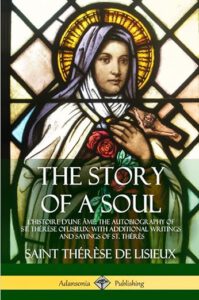 These biographical details help us to understand the choice of today’s Readings. The First Reading (Is 66: 10-14) brings forth an intimate image – that of Jerusalem giving suck like a mother. Jerusalem is not just a physical place but a metaphor for all that Christians look forward to: a paradise to be attained after death. Jerusalem is where the nations of the world will finally come and seek the Lord of Hosts! The Reading is therefore very reassuring for the Missions and missionaries.
These biographical details help us to understand the choice of today’s Readings. The First Reading (Is 66: 10-14) brings forth an intimate image – that of Jerusalem giving suck like a mother. Jerusalem is not just a physical place but a metaphor for all that Christians look forward to: a paradise to be attained after death. Jerusalem is where the nations of the world will finally come and seek the Lord of Hosts! The Reading is therefore very reassuring for the Missions and missionaries.
The Second Reading (1 Cor 13: 4-13) is also pertinent. In her Story of a Soul, St Thérèse writes: “In spite of my littleness, I have the vocation of the apostle. I would like to travel over the whole earth to preach your name and plant your cross on pagan soil. But O my Beloved, one mission alone would not be sufficient for me, I would want to preach the Gospel on all the five continents simultaneously and even to the most remote isles! I would be a missionary, not for a few years only, but from the beginning of creation until the consummation of the ages… O my Jesus, what is your answer to all my follies?”
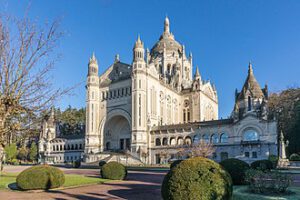
It is said that she got the answer upon meditating on chapters 12 and 13 of St Paul’s First Letter to the Corinthians: she understood that there are different kinds of spiritual gifts, but the same Spirit gives them; that there are different ways of serving, but the same Lord is served. It is like Christ Who is a single body with many parts; and nonetheless it is just one body. Thérèse had what it takes to be an authentic Christian: love, the greatest of the three theological virtues, and the vocation to serve with love from wherever she was.
St. Thérèse loved nature, and often used the imagery of nature to explain how the Divine Presence is everywhere, and how everything is connected in God’s loving care. She saw herself as “the Little Flower of Jesus” (hence, she is a patron of the florists, too), like the simple wild flowers in fields and forests, rather than a brilliant rose or an elegant lily, yet growing and giving glory to God.[3] Apt, therefore, is the Gospel text, in which Jesus says: “Truly, I say to you, unless you turn and become like children, you will never enter the kingdom of Heaven.”
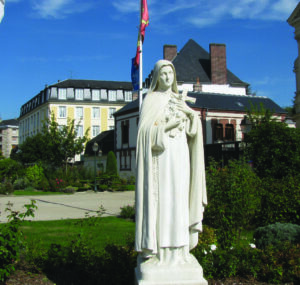
There is no doubt that those who humble themselves will be exalted. In 1997, on her death centenary, she became the youngest person to be designated a Doctor of the Church, and the second Carmelite nun to receive that distinction after St Teresa of Ávila. On this occasion, Pope John Paul II in his Apostolic Letter Divini amoris scientia elucidated what he called Thérèse’s “science of love”:
“The spiritual doctrine of Thérèse of Lisieux has helped extend the kingdom of God. By her example of holiness, of perfect fidelity to Mother Church, of full communion with the See of Peter, as well as by the special graces obtained by her for many missionary brothers and sisters, she has rendered a particular service to the renewed proclamation and experience of Christ’s Gospel and to the extension of the Catholic faith in every nation on earth.”[4]
St Thérèse is thus perfectly justified to be Patroness of the Missions. But how would she look at the Mission field today? This is a very crucial question, better left for another day.
------------
[1] Her feast day in the General Roman Calendar was 3 October, from 1927 until it was moved, in 1969, to 1 October.[2] https://sspx.org/en/news-events/news/why-st-therese-patroness-missions-17832
[3] Cf. https://www.littleflower.org/st-therese/frequently-asked-questions/
[4] No. 10 https://www.vatican.va/content/john-paul-ii/en/apost_letters/1997/documents/hf_jp-ii_apl_19101997_divini-amoris.html
Konkani is not a dialect of Marathi - 1
Part 1 of "O concani não é dialecto do marata", by Mgr. Sebastião Rodolfo Dalgado, in Heraldo, Pangim, Goa, No. 2570, 13 February 2017. Translated from the Portuguese by Óscar de Noronha.
It is not a “Byzantine general’s problem”, as it might appear at first glance, to check whether Konkani is a language or a dialect. For it does matter if Portuguese be a mere modality of Castilian or an autonomous language. Being a mother or a sister is not the same, whether in sociology or in philology, just as it is not the same whether Portuguese be a daughter or a sister of French or of Russian.
It is a subject of capital importance both scientific and practical. A daughter carries on her mother’s existence in law, is entitled to her assets and is sure to resemble her in essential and characteristic features. It is in relation to her mother that she may be considered an improvement or a deterioration, more pure or less pure. Evidently, it is not so with her sister.
All glottologists acknowledge that it has been of utmost value to ascertain that Sanskrit is not the trunk but only a branch of the Indo-European family. Max Muller (Science of Language, 1890, I. p. 194) states: “It was exactly this necessity of determining distinctly and accurately the mutual relation of Sanskrit and the other members of the same family of speech, which led to such important results, and particularly to the establishment of the laws of phonetic change as the only safe means for measuring the various degrees of relationship of cognate dialects, and thus restoring the genealogical tree of human speech.”
For some time now, much has been magisterially written to the discredit of the ill-fated Konkani language; she has been cannily smeared with such dark colours, and exposed to public scorn as being such a horrendous monster, that I believe it opportune to know, clearly and without gimmicks, if she really deserves such treatment.
It is true that the subject has already been dealt with, quite exhaustively, by competent people, especially Dr Gerson da Cunha (The Konkani Language and Literature) and Ramachandra Gunjicar (Sarasvati mandala).
But, from the looks of it, they have not been read or duly studied by many who repeat what they have said about Konkani. Or else, we would not hear so much nonsense laced with disconcerting remarks.
It is also our generally accepted policy that money spent on the purchase of books is a waste. And with regard to Konkani, almost all Goans possess a magical mastery given that they have learned to babble it away on their mother’s lap! If some admit that they fall short, yet argue and come up with far-fetched doctrines, they do so out of false humility.
I do not propose to treat the matter at great length; it would take much time and space. I will gather what others have put forth and indicate the main topics leading to further research by a person well-meaning and eager to learn, that rara avis, if there is any.
(First published in Revista da Casa de Goa, Lisbon, Series II, No. 24, Sep-Oct 2023, p. 15)
God above all else
Today’s Readings are yet another lesson in God’s attributes and the kingdom of Heaven that is far beyond all we can imagine. We for our part have to bloom where we are planted, always giving praise and thanks to God for the infinite variety of benefits, blessings and graces received.
The First Reading (Is 55: 6-9) is taken from the last part of the second Book of Isaiah. After God lets His people go into exile, He calls them to conversion. Their exile, albeit temporary, is a time of trial, not unfamiliar to us in our valley of tears. It is always a good idea, then, to let ourselves be conquered by His boundless love for us. All we have to do is align ourselves with Him, and never seek to bend His teachings to suit our personal tastes.
But alas, instead of thus exercising humility and justice, we see man offending God times without number. Some people equate the natural with the supernatural, while others don’t even acknowledge the supernatural. Yet others talk of justice in the same breath as they abuse their neighbour; they worship power and money, readily becoming slaves to both, not to speak of those who curry favour with false gods and fail to honour the true God they have known since baptism.
The true God, says the Psalm, is highly to be praised and his greatness immeasurable. It is foolish to imagine that we can count equality with Him, yet He is close to all who call Him. And, as St Paul says, if God is for us, who can be against us? (Cf. Rom 8: 31) Hence, not only love for God, it is a rewarding spiritual exercise to cultivate deep faith, hope and trust in Him. There is no better antidote to fear, tension, stress, and all that bedevils us. He who knows how many hairs are on our head takes care of us.
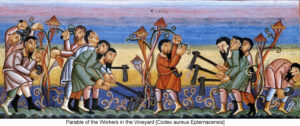
In the Gospel (Mt 20: 1-16), Jesus illustrates the fact that God’s thoughts are not our thoughts, and His ways not ours! The parable He recounts shows not a grudging but a generous God – who treats each according to their needs; a God not mathematical in his dealings but magnanimous – and who never fails us; far from egalitarian but extremely empathetic – who comforts and heals. God is the Lord and Master of the universe; the immense difference between Him and us cannot be wished away.
The Gospel text may be a shocker to the world’s paymasters and economists; yet, it is more about the Kingdom of Heaven, where rewards follow a different economy! We are not to expect God to pay us according to what we perceive to be our merits; in fact, He knows our backstory better than we do. That is how Jesus revealed to the Pharisees that the goodness of God goes beyond human criteria of compensation and that divine reward is not in keeping with salaries paid by human standards.
This applies not only to individuals, but to societies and nations too. Indeed, the verse that reads “the last will be the first, and the first last” underlines the fact that pagan nations, who were the last to be called by God, have taken precedence over the Jews, who had been called first but rejected Him. And some Bible editions add: “For many are called, but few chosen.” A lesson to remember!
Finally, St Paul’s pithy statement in the Second Reading (Phil 1: 20-24, 27) says it all: “To me, to live is Christ, and to die is gain.” Presently in prison, if they let him live, he promises to work for Christ, and if dead, He would be with Him in Heaven anyway. So, he would be happy either way. To us, maybe the woods are lovely, dark and deep – as the Poet would say – and we have promises to keep, and miles to go before we sleep... At any rate, if through our life we have had God above all else, when we finally do sleep, we will be with Him anyway!
Banner: Mass of Saint Gregory the Great by Master of Portillo (1520-1525). https://rb.gy/qhikf
Dalgado and the Konkani-Marathi Controversy
In 1917, Monsignor Sebastião Rodolfo Dalgado (1855-1922), an internationally renowned linguist and professor of Sanskrit at the University of Lisbon, analysed the linguistic and grammatical characteristics of the Konkani language, demonstrating its identity as being distinct from Marathi, in a series of nine articles, entitled “Konkani is not a dialect of Marathi”, published in the Panjim daily Heraldo[1].
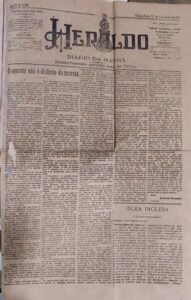
What were the events that led Mgr. Dalgado to write the series?
Mgr. Dalgado was deeply aware of the pioneering linguistic, lexicographic and literary work systematically put in by European missionaries, mainly in the Roman script, in sixteenth and seventeenth century Goa;[2] sadly, Konkani studies began to languish side by side with the waning of religious zeal in the eighteenth century, which included the Pombaline period. However, even before that, indifference had turned into official hostility. An edict issued in the year 1684, by Viceroy Francisco de Távora, and some other state and ecclesiastical orders, sacrificed Konkani at the altar of Portuguese, which hereafter became the official vehicle of communication. A few Goan Catholic families began to regard Portuguese as their mother tongue, while the Hindus sought refuge in Marathi, which they used for religious and cultural purposes.
Notwithstanding the relegation of Konkani to the background, there was never a doubt about its linguistic status until, on the academic front, a Scottish linguist and poet, John Leyden, working in British India, unwittingly upset the apple cart. In his essay on Indian languages, in 1807, he classified Konkani as a dialect of Marathi, specifying that “the jargon of Goa” differed considerably from pure Konkani. A decade later, Baptist missionary William Carey’s translation of the Bible at the Serampore Mission was a shot in the arm for Konkani. However, it is Leyden’s ideas that began to gain currency, supported by another British missionary linguist John Wilson; the latter eventually came into the Konkani fold and his pupil J. M. Mitchell kept the flag flying, but contemporaries like writer Richard Burton, orientalist Erskine Perry, judge R. X. Murphy, civil servant John Beames and Sanskrit scholar A. C. Burnell were racked with indecision.
In Goa, the exclusion of Konkani from the curriculum of the first state-owned schools set up in 1831 demoralised Konkani speakers a great deal. Thankfully, there appeared light at the end of the tunnel when, in 1858, Goa Secretary-General J. H. da Cunha Rivara published an Ensaio histórico da língua concani.[3] He was enthusiastically supported by novelist and parliamentarian Francisco Luís Gomes and researcher Miguel Vicente de Abreu. However, the restoration of Konkani’s pride was short-lived, for in 1869, at the behest of the official Marathi interpreter Suriagy Ananda Rao, the use of the language was banned by José Ferreira Pestana, the Governor notorious for dismantling the old city of Goa. There was no question of its use in academic circles, whereas Marathi ruled the roost even at the prestigious lycée in the capital city.
As though to further dismantle Konkani, in 1877, Bombay-based academic R. G. Bhandarkar termed it a dialect of Marathi.[4] By this time, the number of scholars favouring the dialect theory had slightly outnumbered those holding the language theory; but the tide began to change after Goan scholar José Gerson da Cunha’s convincing response, The Konkani Language and Literature, saw the light of day in the said metropolis, in 1881.[5] He was the first to systematise and coordinate the arguments of the language theory and ought to have drawn stout torchbearers to the cause; but alas, at least three supporters – the Mangalore-based Italian Jesuit Angelo Maffei, Bombay-based writer R. B. Gunjikar and Mangalorean jurist Jerome A. Saldanha – were somewhat conciliatory. A stronger blow was yet to come by way of G. A. Grierson’s Linguistic Survey of India, whose seventh volume dedicated to Marathi, worked on by Norwegian scholar Sten Konow, was published by the British Government in 1905.
By and large, British India scholarship had hitherto favoured Marathi, but Konkani’s defenders in Goa were determined to not take it lying down. In that very year, Goan mestizo poet Fernando Leal began a crusade for the “resurrection of Konkani”,[6] close on the heels of another, Thomaz Mourão Garcez Palha, who had also worked hard. Writer Eduardo Bruno de Souza[7] in Poona, and Cristóvão Pinto, writer and parliamentarian, in Goa, followed suit;[8] and the ayurvedic physician Ramachondra Panduronga Vaidia, alias Dadá Vaidia, spoke in Konkani at Portuguese India’s first Provincial Congress, held in April 1916. He had made his point but was shouted down by Marathi writer Xambá Suria Rao Sardesai, who followed it up with a two-part article entitled “Ressurreição do concani”[9], obviously hinting at Leal’s clarion call issued a decade earlier.
The stage was set for Sebastião Rodolfo Dalgado to intervene from distant Lisbon. The tireless Goan Catholic missionary was now on a new mission: to prove Konkani’s credentials as a language. He had published a Konkani-Portuguese dictionary in Bombay,[10] and a Portuguese-Konkani volume in Lisbon.[11] The university professor and Fellow of the Portuguese Academy of Sciences was an authority on the influence of Portuguese on Asian languages, but his thoughts kept returning to Konkani. Significantly, one of his last works was a Konkani Grammar, which until recently lay in manuscript form at Goa’s State Library.[12]
Dalgado’s authoritative voice in Heraldo (Figure 1) helped put to rest issues that were plaguing Konkani ever since Leyden’s ignorance of Konkani’s grammatical structure had led him to question its linguistic independence.[13] However, as José Pereira points out in his Konkani: A Language,[14] “because of its language and limited circulation”, his nine-part series “remained unread by the majority of those who could have profited by it.”[15] Today, its translation into English (see Document in this issue) hopes to right that historical wrong and pay homage to that rare scholar whose centenary was observed last year.
Bibliography
da Costa, Aleixo. Dicionário de Literatura Goesa. 4 volumes. Macau/Goa: Fundação Oriente/Broadway, [1997-2005]
Dalgado, [Sebastião] Rodolfo. “O concani não é dialecto do marata”, in Heraldo (Pangim, Goa), Nos. 2570 to 2576, dated 13, 14, 15, 16, 17, 18 and 22 February 1917.
Gomes, Olivinho. Konkani Literature in Roman Script. A Brief History. Goa: Dalgado Konknni Akademi, 2010.
Mascarenhas, Constâncio. “Defesa da língua concani”, in Boletim do Instituto Menezes Bragança, Bastorá: Tipografia Rangel, 1966.
Pereira, José. Konkani Literature: A History of the Konkani-Marathi Controversy. Dharwar: Karnatak University, 1971
SarDessai, ManoharRai. A History of Konkani Literature (from 1500 to 1992). New Delhi: Sahitya Akademi, 2000.
Endnotes
[1] “O concani não é dialecto do marata”, in Heraldo, nos. 2570 to 2576, dated 13, 14, 15, 16, 17, 18 and 22 February 1917.
[2] Among others, Henrique Henriques; Thomas Stephens; João de S. Matias; Gaspar de S. Miguel; Simão Álvares; Karel Prikryl; Diogo Ribeiro, António de Saldanha, Miguel de Almeida, Ignazio Arcamone and Diogo de Amaral.
[3] Nova Goa: Imprensa Nacional, 1858.
[4] Wilson Philological Lectures on Sanskrit and the Derived Languages. Bombay: 1914.
[5] Bombay: Government Central Press, 1881
[6] Cf. “Glossário Português Oriental”, in Heraldo, no. 1562, 24 May 1905. Parts 2 and 3 appeared on 25 May and 10 June 1905.
[7] Founder-editor of the first periodical in Konkani, Udenteche Sallok, published from Poona, 1889-1894, he also wrote a series of articles on Konkani, in O Heraldo.
[8] Cf. his articles in Heraldo, August-October 1916.
[9] Heraldo, nos. 2336, 2337, 28-29 April 1916.
[10] Diccionario komkani-portuguez filológico-etymologico. Bombay: 1893.
[11] Diccionario portuguez-komkani. Lisboa: Imprensa Nacional, 1905.
[12] Mousinho de Ataíde and Cristo de Menezes (co-translators and co-editors), Grammar of Konkani Language. Goa: Broadway Publishing House, 2022.
[13] Mgr. Dalgado’s legacy was kept alive by another scholar, Dr Mariano Saldanha, who was a professor of Sanskrit at the University of Lisbon (1929-46), and later, of Sanskrit and Konkani at the Escola Superior Colonial (1946-48). Unlike Dalgado, who favoured the writing of Konkani in the Devanagari script, Saldanha was a votary of Konkani in the Roman script and wrote extensively on the language particularly after the latter period.
[14] José Pereira, Konkani: A Language. Dharwar: Karnatak University, 1971.
[15] Ibid., p. 53
First published in Revista da Casa de Goa, Series II, Sep-Oct 2023, pp. 16-19
Banner: https://rb.gy/egohs
The Other Side of Love
“Thou shalt love the Lord thy God with all thy heart, and with all thy soul, and with all thy mind” and “Thou shalt love thy neighbour as thyself” are two commandments that God gave Moses for the guidance of the Chosen People. But alas, they carried on, either oblivious of the twin commandments, or practising one to the detriment of the other. Eventually, their hearts were so hardened that lex talionis – an eye for an eye, a tooth for a tooth – became second nature to the Hebrew race.
Yet, today’s First Reading (Sir 27: 30; 28: 7) and Psalm give the lie to our notion of the Old Testament. Sirach calls anger and wrath “abominations” that mark a sinful man, who is therefore cautioned that “he that takes vengeance will suffer vengeance from the Lord.” The antidote is to “forgive your neighbour the wrong he has done, and then your sins will be pardoned when you pray.” In fact, last Sunday’s Gospel text stressed that there is no use seeking the Lord’s pardon if we haven’t reconciled with our brother. A sure way out of our predicament is “to remember the end of your life… remember destruction and death, and be true to the commandments.” That is to say, having the Last Things – Death, Judgement, Heaven and Hell – before our eyes improves our spiritual vision![1]
When Peter the Apostle heard Our Lord pronounce the first rules of Christian law, he wished to have them properly spelt out. Hence, the question in today’s Gospel (Mt 18: 21-35): “Lord, how often shall my brother sin against me, and I forgive him? As many as seven times?” The teachers of the law had taught the Jews that to pardon three times was the pinnacle of perfection; but now Jesus seemed to extend love and forgiveness infinitely. “And to make it better understood how rigorously His law of loving kindness must bind our actions, He set before the Apostles’ eyes one of those Oriental courts where the lightest fancy of their monarch can, in an instant, raise up or demolish the most splendid fortunes. So, then, Charity, much more than Justice, should be the foundation of Christian righteousness, or rather one must be blended with the other! ‘Mercy and faithfulness meet in one; justice and peace are united in one embrace!’ even as two sisters,” says the Abbé C. Fouard, in his Jesus Christ the Son of God,[2] a most elevating work.
However, we would do well to not water down Jesus’s commandment of love by applying it indiscriminately. We should not be led to think that to love means to suspend critical judgement about men and matters. Didn’t Our Lord exhort us to be wise as serpents and harmless as doves? Did He not warn his disciples that they would be “like sheep among wolves” (Mt 10: 16)? It behoves us to note therefore that “There’s daggers in men’s smiles”, as we read in Macbeth, and to not be naïve. The world is hostile to God’s Word and they are out to destroy the “One True Church” to which we belong.

“Is it not true that today Our Lord Jesus Christ and His Holy Church are disobeyed, abandoned, betrayed? Is it not true that the laws, institutions, morals, and ways of the people are more and more hostile to Jesus Christ?” – asks Professor Plínio Corrêa de Oliveira in his Way of the Cross.[3] In such a situation, what we need is to be full of righteous anger, not foolish love. “Christ Himself was filled with righteous anger against the vendors who had desecrated the house of God. Such anger is allowable only if it tends to punish those who deserve punishment, according to the measure of their guilt, and with the sincere intention to redress what harm may have been done or to correct the wrongdoer,” explains Fr. John Hardon in his Modern Catholic Dictionary.[4]
Let us therefore not be carried away by this thing called love: righteous anger is permissible and even laudable. When St Paul said, “love bears all things… endures all things” (1 Cor 13: 7) did he mean that we should selfishly, slavishly, shamelessly, accept all things? We cannot love all people or things; we ought to distinguish between true and false loves, between love of self and love of God, between those who love God and hate Him. We may turn a blind eye to those who offend us but we must stand by our God when people offend Him. We need to ask ourselves whether what we are doing is simply because we love to do it, or because it is good, true, right and beautiful. Alas, arguably the most abused word in the dictionary today must be put in place.
Of course, we must always ensure that there is no tinge of hatred and no desire for revenge in what we do; it ought to be our desire only to restore things to their pristine state, and then forgive and possibly even forget. Nor should we live in perpetual doubt and fear. Rather, it is most proper that we entrust ourselves to the Lord our God and do whatever is within our reach – pray as if everything depended on prayer and work as if everything depended on work. In the words of St Paul in today’s Second Reading (Rom 14: 7-9), “none of us lives to himself, and none of dies to himself. If we live, we live to the Lord, and if we die, we died to the Lord.” Then, whether we live or die we should love God and be grateful that we belong to Him.
[1] See my blogpost “The Last Things – First!” https://www.oscardenoronha.com/2019/11/01/the-last-things-first/
[2] Abbé C. Fouard, Jesus Christ the Son of God, Goa: Don Bosco, 1960, p. 270.
[3] Plínio Corrêa de Oliveira, The Way of the Cross https://www.tfp.org/the-way-of-the-cross/
Guardians de Goa
Editorial
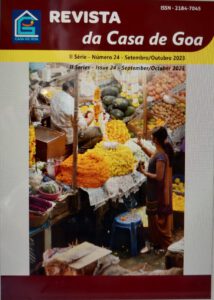
We are holding in our hands an edition tracing the journey of the Konkani and Portuguese languages in Goa; Luso-tropical drama; fiction and travel literature; cuisine; the arts and artists; fragments of our history and culture; and what matters most, reminding us of our duty to be defenders of all that comprises the idea and spirit of Goa.
This issue opens with an essay bearing a poetic title and interesting content: “Portuguese in different sounds”, by our associate editor José Filipe Monteiro. Elsewhere, he reviews O Signo da Ira (The Sign of Wrath), a neorealist novel by Orlando Costa, one of the classics of Indo-Portuguese literature, set in Goa of the nineteen sixties. Costa is also remembered in Júlia Serra’s feature article bearing the title of his play Sem Flores nem Coroas (No Flowers, No Wreathes).
It is well known that Portuguese and Konkani mutually enriched each other in Goa. Less known, however, is the tale of two Indian sisters – Konkani and Marathi – that clashed. A learned Goan resident in Lisbon it was who stopped the conflict dead in its tracks, as associate editor Óscar de Noronha narrates in his essay titled “Dalgado and the Konkani-Marathi controversy”.
We take this opportunity to launch a new section, Document, presenting in English translation the first of the nine articles, under the title “Konkani is not a dialect of Marathi”, published over a century ago in Panjim’s Heraldo, by Monsignor Sebastião Rodolfo Dalgado. There he proved the linguistic and grammatical characteristics of Konkani, and established its identity.
We can feel the sweetness of a language in its popular literature, as illustrated by our Konkani Corner, where you can revisit Konkani sayings translated into Portuguese by the late poet Barreto Miranda. Gastronomy too has the ability to lighten the atmosphere; so, it is no surprise that José Filipe Monteiro has paid tribute to Agnelo Silveira, missing as he does the “man who set up Goan cuisine in Lisbon”.
Ana de Miranda writes about some other aspect of the “mythical, legendary East”. In her very suggestive text, titled “Monsoon Funeral”, she sketches her family history; of how “little by little, slowly and elegantly, the occupant of the house bids goodbye and lets himself dissolve in the rainwater”: a tribute to artist Rishaad de Miranda, son of the great caricaturist Mário, whom we paid homage earlier (Revista da Casa de Goa, No. 12).
“All the world’s a stage, and all the men and women merely players” is a short and sweet Shakespearean line that must have been at the back of Joaquim Correia’s mind when he wrote “Theatre in Goa: tradition and its similarities with Macau and Portugal”: a survey of the traditional Konkani tiatr in Goa, placed parallel to Macanese patois theatre and the Portuguese Teatro de Revista.
And speaking of the Far East, António Aresta travels “From India to Macau”, following the itinerary of the nineteenth-century traveller Pedro Gastão Mesnier, who was also a public works conductor and professor of physics and chemistry in Goa, and later, private secretary to the Governor of Macau, and editor and teacher there.
Such a fascinating life that; or as Amanda D’Costa says in her poem, speaking of another “man with a dream”: “It’s worth it”! The same can be said about the painting by Clarice Vaz, our resident collaborator; a watercolour by Girish Gujar, and photography by Payal Kakkar. Of course, all three refer to Goa, a land that is Susegad (Quiet), as was evident from an exhibition of the same name, comprising painting and associated cultural programme, coordinated by João Coutinho, a member of Casa de Goa. Interestingly, a weekly newsmagazine in video format, produced in Konkani by the Goan diasporic community of Melbourne, is titled similarly: Susegad Danpaar (Quiet Afternoon). These two news items comprise the respective section of our Revista.
Of course, our edition is never complete without reflecting on our culture. Thus, readers will have the opportunity to read the third part of the article co-authored by Philomena and Gilbert Lawrence, on the topic: “Is GEM culture (Goan, East Indian and Mangalorean) a victim of academic baloney?” Very important to enlighten the new generations and make sure that they do not give in to ill-informed clichés about the Indo-Portuguese way of life.
But what was life in Goa really like? In his series on “Fragments of Goan History”, Mário Viegas profiles the Regional Centre of Chinchinim, an association located in that illustrious village of Salcete and active in the last century.
Who can resurrect the ancient guardians of our modus vivendi? In fact, it is more important to find new ones, because without them, Goa will be nothing, and “will end by itself”, going by a rather portentous dictum attributed to St Francis Xavier. And three quarters of a century ago, what were those “Defenders of the Portuguese Flag in Bombay” targeting? They are mysteries that John Menezes unveils in his well-documented article dotted with precious autobiographical snippets.
We are very fortunate to be part of the Revista, which also strives to be a guardian of Indo-Portuguese culture. Hopefully, it will always be welcomed by the powers-that-be and by the world at large.
(Revista da Casa de Goa, Series II, No. 24, September-October 2023)
https://online.fliphtml5.com/bcbho/ovjl/?1694469776240#p=1
Guardiães de Goa
Editorial

Temos nas mãos uma edição em que se fala do percurso das línguas concani e portuguesa em Goa; do teatro luso-tropical; da literatura de ficção e de viagens; da culinária; das artes e dos artistas; de fragmentos da nossa história e cultura; e, o que importa mais, lembra-nos do dever de sermos defensores de tudo o que compreende o conceito e espírito de Goa.
O número abre com um ensaio de título poético e conteúdo interessante: “Português em vários sons”, da autoria do nosso editor associado José Filipe Monteiro, que, mais além, faz uma recensão crítica a O Signo da Ira, romance neorrealista de Orlando Costa, um dos clássicos da literatura indo-portuguesa, da Goa dos anos sessenta do século transacto, autor ora duplamente lembrado nesta edição, com a crónica de Júlia Serra, sobre a peça teatral intitulada Sem Flores nem Coroas.
É sobejamente conhecido que em Goa o português e o concani mutuamente se enriqueceram. Menos conhecido, porém, é a história de duas irmãs indianas – o concani e o marata – que se entrechocaram. Foi um sábio goês residente em Lisboa que travou o conflito, e dele nos fala o editor associado Óscar de Noronha, no ensaio intitulado “Dalgado e a controvérsia concani-marata”.
Aproveitamos o ensejo para inaugurar uma nova secção, Documento, apresentando em tradução inglesa o primeiro dos nove artigos, sob o título de “O concani não é dialecto do marata”, há mais de um século publicados no Heraldo, de Pangim, por monsenhor Sebastião Rodolfo Dalgado que neles firmara as características linguísticas e gramaticais do concani, estabelecendo assim a sua identidade.
A doçura de uma língua sentimo-la na sua literatura popular, como bem ilustra o Cantinho do Concani, onde se tem revisitado adágios concanis traduzidos em português pelo finado poeta Barreto Miranda. Também a gastronomia tem o condão de amenizar o ambiente. Por isso, não admira que José Filipe Monteiro tenha rendido preito a Agnelo Silveira, pelas saudades do “homem que domiciliou a culinária goesa em Lisboa”.
De uma outra vertente do “Oriente mítico, lendário” escreve Ana de Miranda. No seu texto muito sugestivo, intitulado “Monsoon Funeral”, delineia uma nota sobre a história familiar; de como “aos poucos, devagar, com elegância, o habitante da casa despede-se e deixa-se dissolver na água de chuva”: tributo ao artista Rishaad de Miranda, filho do grande caricaturista Mário, que antes foi alvo de nossa homenagem (Revista da Casa de Goa, No. 12).
“O mundo é um palco e todos os homens e mulheres são somente actores”, é uma frase lapidar shakespeariana, que terá estado no fundo da mente de Joaquim Correia ao escrever “O Teatro em Goa: tradição e suas similitudes com Macau e Portugal”: um levantamento sobre o tradicional tiatr em concani de Goa, posto em paralelo com o teatro macaense em Patuá e o Teatro de Revista em Portugal.
E falando do Extremo-Oriente, António Aresta viaja “Da Índia para Macau”, seguindo o itinerário do aventureiro novecentista Pedro Gastão Mesnier, que foi também condutor das obras públicas e professor de física e química em Goa, e mais tarde, secretário particular do Governador de Macau, e aí ainda redactor e professor.
Uma vida fascinante essa; ou como diz Amanda D’Costa no seu poema, falando de um outro “homem com um sonho”: “Vale a pena”! Diga-se o mesmo da pintura de Clarice Vaz, nossa colaboradora residente; da aguarela de Girish Gujar, e da fotografia da autoria de Payal Kakkar. Claro que os três se referem a Goa, esse torrão que é Susegad (sossegado), como ficou patente numa exposição homónima, de pintura e programa cultural associado, da responsabilidade de João Coutinho, sócio da Casa de Goa. Curiosamente, também um semanário noticioso em formato vídeo, produzido em concani pela comunidade diaspórica goesa de Melbourne assim se intitula: Susegad Danpaar (Tarde Sossegada). São duas notícias que preenchem a respectiva secção da nossa Revista.
É claro que nunca fechamos a edição sem ponderarmos sobre a nossa cultura. Assim, os leitores terão o ensejo de ler a terceira parte do artigo da co-autoria de Philomena e Gilbert Lawrence, sobre o tema: “Será a cultura GEM (goesa, indiana oriental e mangaloriana) vítima de equívoco?” Muito importante para o esclarecimento das novas gerações, e para que elas se desistam dos clichés mal informados sobre o modo de ser indo-português.
Mas como era na realidade a vida em Goa? Na sua série sobre “Fragmentos da História de Goa”, Mário Viegas traça o perfil do Centro Regional de Chinchinim, que no século transacto fora uma agremiação activa sita nessa ilustre aldeia de Salcete.
Quem poderá ressuscitar os antigos guardiães do nosso modus vivendi? Aliás, o mais importante é achar novos, pois sem eles Goa nada será, e “por si acabará”, na frase algo apocalíptica atribuída a S. Francisco Xavier. E, há três quartos do século, que visavam os “Defensores da bandeira portuguesa em Bombaim”? São mistérios que nos desvenda John Menezes, no seu artigo bem documentado e com preciosos traços autobiográficos.
Temos a boa sorte de fazer parte desta Revista, que se esforça a ser também guardiã da cultura indo-portuguesa. Oxalá sempre seja bem compreendida pelos que detêm o poder e pelo povo em geral.
(Revista da Casa de Goa, Serie II, No. 24, Setembro-Outubro de 2023)
https://online.fliphtml5.com/bcbho/ovjl/?1694469776240#p=1

